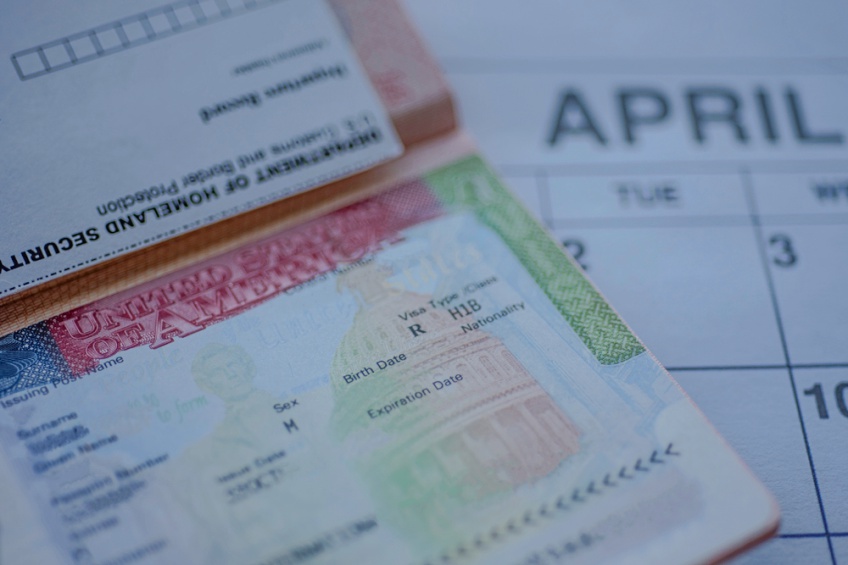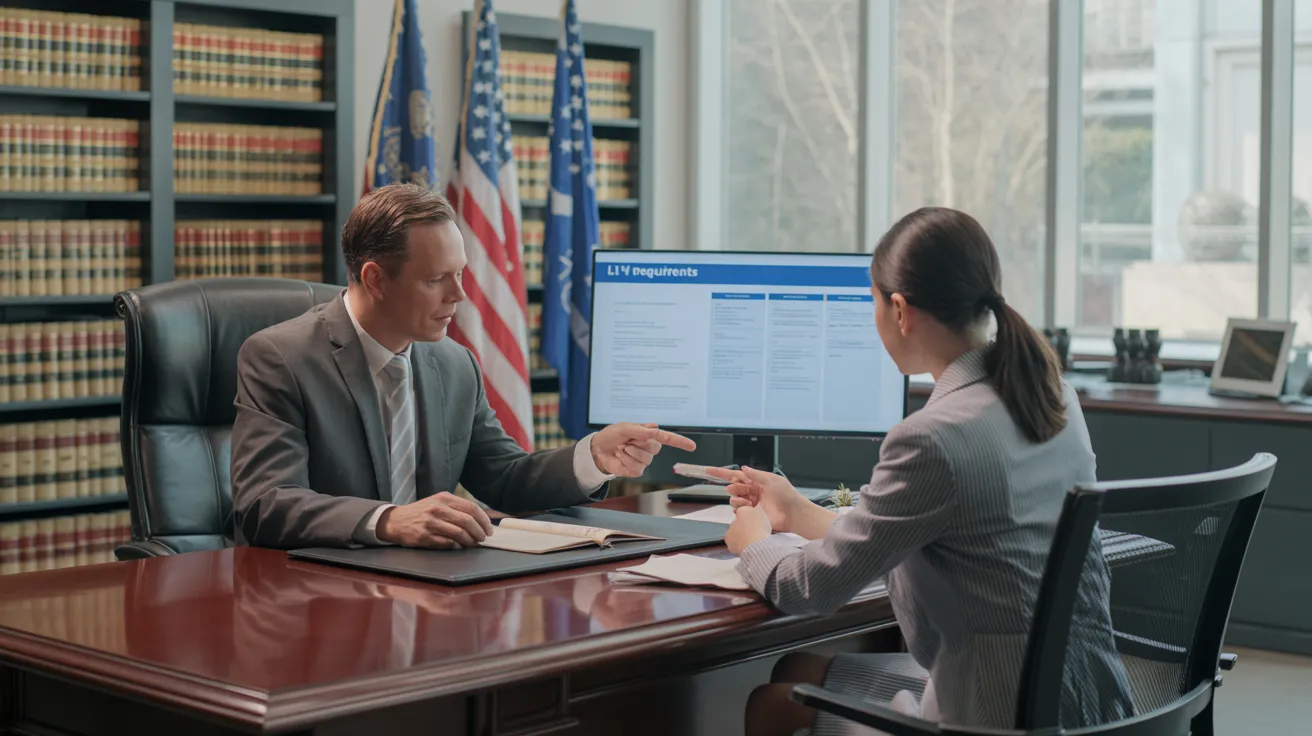Whatever You Required to Learn About the L1 Visa: Benefits, Demands, and More
The L1 Visa functions as a critical tool for international companies looking for to transfer staff members to the United States, facilitating both operational performance and the transfer of specialized expertise. With unique categories for executives and specialized specialists, this visa presents various benefits, including possible pathways to irreversible residency. Understanding the eligibility demands and application procedure is necessary for a successful change. As we examine the complexities of the L1 Visa, it comes to be clear that maneuvering its intricacies is extremely important for organizations intending to take advantage of international talent successfully. What obstacles might you come across in the process?
Review of the L1 Visa

Kinds Of L1 Visas

Multiple kinds of L1 visas accommodate the diverse requirements of multinational business wanting to transfer staff members to the United States. The two key classifications of L1 visas are L1A and L1B, each developed for specific roles and duties within an organization. L1 Visa Requirements.The L1A visa is planned for supervisors and execs. This group allows business to move individuals who hold managerial or executive settings, allowing them to supervise operations in the U.S. This visa is valid for an initial period of up to 3 years, with the opportunity of extensions for a total amount of as much as seven years. The L1A visa is specifically beneficial for companies seeking to develop a strong leadership presence in the U.S. market.On the various other hand, the L1B visa is marked for staff members with specialized expertise. This includes individuals who have sophisticated proficiency in certain locations, such as exclusive modern technologies or unique processes within the business. The L1B visa is likewise valid for an initial three-year duration, with expansions readily available for approximately five years. This visa classification is perfect for firms that call for employees with specialized skills to improve their procedures and preserve an one-upmanship in the U.S.Both L1A and L1B visas allow for double intent, implying that visa owners can get irreversible residency while on the visa. Understanding the differences between these two groups is vital for companies planning to navigate the complexities of worker transfers to the USA successfully
Eligibility Requirements
To get an L1 visa, both the employer and the worker have to meet specific eligibility standards set by united state immigration authorities. The L1 visa is designed for intra-company transferees, allowing multinational companies to move workers to their U.S. offices.First, the employer must be a certifying company, which implies it must have a parent firm, branch, subsidiary, or affiliate that is operating both in the U.S. and in the international nation. This partnership is essential for demonstrating that the worker is being moved within the exact same business structure. The employer has to additionally have actually been doing service for at the very least one year in both locations.Second, the employee needs to have been employed by the foreign firm for at the very least one continuous year within the three years coming before the application. This work should remain in a supervisory, executive, or specialized understanding ability. For L1A visas, which cater to supervisors and execs, the staff member has to show that they will certainly continue to operate in a similar capacity in the U.S. For L1B visas, meant for staff members with specialized expertise, the individual need to have distinct proficiency that contributes considerably to the business's operations.
Application Process
Navigating the application procedure for an L1 visa entails several important actions that should be completed properly to ensure an effective outcome. The initial action is to identify the appropriate category of the L1 visa: L1A for managers and executives, or L1B for employees with specialized expertise. This difference is substantial, as it influences the documentation required.Once the group is recognized, the united state company should submit Type I-129, Request for a Nonimmigrant Employee. This type must include comprehensive info regarding the firm, the employee's role, and the nature of the work to be performed in the united state Accompanying paperwork generally consists of proof of the connection in between the U.S. and foreign entities, proof of the staff member's qualifications, and information regarding the job offer.After entry, the united state Citizenship and Migration Services (USCIS) will assess the request. If approved, the staff member will be alerted, and they can then get the visa at an U.S. consular office or embassy in their home nation. This entails completing Form DS-160, the Online Nonimmigrant copyright, and setting up an interview.During the meeting, the applicant has to provide various files, consisting of the authorized Form I-129, proof of work, and any added supporting evidence. Following the meeting, if the visa is given, the worker will certainly get a visa stamp in their ticket, permitting them to get in the U.S. to benefit the funding company. Appropriate prep work and detailed paperwork are vital to maneuvering this process efficiently.
Advantages of the L1 Visa
Among the notable advantages of the L1 visa is its capacity to facilitate the transfer of key workers from global offices to the USA. This visa is particularly helpful for international companies looking for to maintain consistency in procedures and management throughout boundaries. By permitting execs, supervisors, and specialized staff members to function in the united state, organizations can assure that their most crucial skill is readily available to drive organization objectives.Another significant advantage of the L1 visa is its relatively straightforward application process contrasted to other work visas. Organizations can petition for the L1 visa without the requirement for a labor certification, which improves the employment of foreign employees. The visa can be approved for a first duration of up to 3 years, with the possibility of expansions, helping with lasting assignments.The L1 visa likewise offers a path to irreversible residency. Employees on L1A visas (for supervisors and execs) can make an application for a Permit after one year, quickening their modification to long-term condition. This attribute is an attractive incentive for skilled individuals seeking stability in the united state workforce.Additionally, L1 visa holders can bring their prompt member of the family to the U.S. under L2 condition, enabling spouses and kids to live and research in the country, improving the general allure of this visa classification. In general, the L1 visa functions as an essential device for global companies, fostering cross-border partnership and ability flexibility.
Common Difficulties
While the L1 visa offers various advantages for international companies and their workers, it is not without its difficulties. One significant difficulty is the strict paperwork and eligibility needs enforced by the united state Citizenship and Migration Provider (USCIS) Firms must supply in-depth evidence of the international worker's credentials, the nature of the company, and the qualifying connection in between the U.S. and foreign entities. This process can be lengthy and may call for lawful experience to navigate successfully.Another difficulty is the capacity for scrutiny throughout the request process. USCIS police officers might question the authenticity of the company procedures or the employee's duty within the company. This examination can bring about delays or even denials of the copyright, which can substantially affect the company's operational strategies and the staff member's profession trajectory.Furthermore, the L1 visa is tied to the funding employer, which indicates that job changes can make complex the visa condition. If an L1 visa holder wishes to switch employers, they should commonly seek a different visa group, which can include intricacy to their migration journey.Lastly, preserving conformity with L1 visa guidelines is vital. Employers have to ensure that their worker's role straightens with the first application and that the company remains to meet the qualification requirements. Failing to do so can result in revocation of the visa, impacting both the worker and the company. These challenges necessitate comprehensive prep work and ongoing administration to ensure an effective L1 visa experience.
Tips for Success
To efficiently browse the L1 visa process, thorough prep work is essential. Begin by completely comprehending the certain needs for the L1 visa group you are obtaining, whether L1A for managers and executives or L1B for workers with specialized knowledge. Collect all essential documentation early at the same time, including evidence of your work history, organizational structure, and the nature of business operations.Engage legal counsel experienced in migration regulation to assist you through the complexities of the application. A lawyer can aid guarantee that your application is full, exact, and compelling. They can likewise assist in getting ready for potential demands for evidence (RFEs) by proactively attending to locations that might raise questions.Additionally, maintain clear communication with your company, that need to give important support for your application. L1 Visa. Confirm that they recognize their duties, consisting of submitting the needed requests and giving documents that validates your duty in the organization.Prepare click here for the visa meeting by exercising response to common questions concerning your specialist background and the nature of your work. Showing self-confidence and clearness can considerably impact the outcome of your application
Frequently Asked Questions
Can Household Members Accompany L1 Visa Holders?
Yes, relative can go along with L1 visa owners. Spouses and unmarried kids under 21 years old are qualified for L2 visas, which allow them to live and examine in the USA during the L1 holder's keep.
The Length Of Time Can L1 Visa Owners Remain In the U.S.?
L1 visa holders can originally remain in the united state for as much as 3 years (L1 Visa). This period may be expanded, permitting an optimum keep of 7 years for L1A visa holders and 5 years for L1B visa holders
Is the L1 Visa a Double Intent Visa?

Can L1 Visa Holders Get a copyright?
Yes, L1 visa holders can get a permit - L1 Visa. The L1 visa supports double intent, allowing holders to pursue permanent residency while preserving their non-immigrant standing, helping with a smoother changeover to a permit
What Happens if an L1 copyright Is Refuted?
If an L1 copyright is rejected, the applicant may receive a notice detailing the factors for rejection. L1 Visa. They can appeal the decision, reapply, or explore alternate visa options relying on their conditions and certifications
Conclusion
In summary, the L1 Visa acts as a necessary instrument for multinational companies seeking to transfer employees to the United States. Comprehending the distinctions in between L1A and L1B categories, in addition to the eligibility needs and application procedures, is important for effective navigation of this non-immigrant category. The benefits used, including structured applications and pathways to long-term residency, even more enhance its appeal. Attending to typical difficulties efficiently can result in a more desirable result in the copyright procedure.